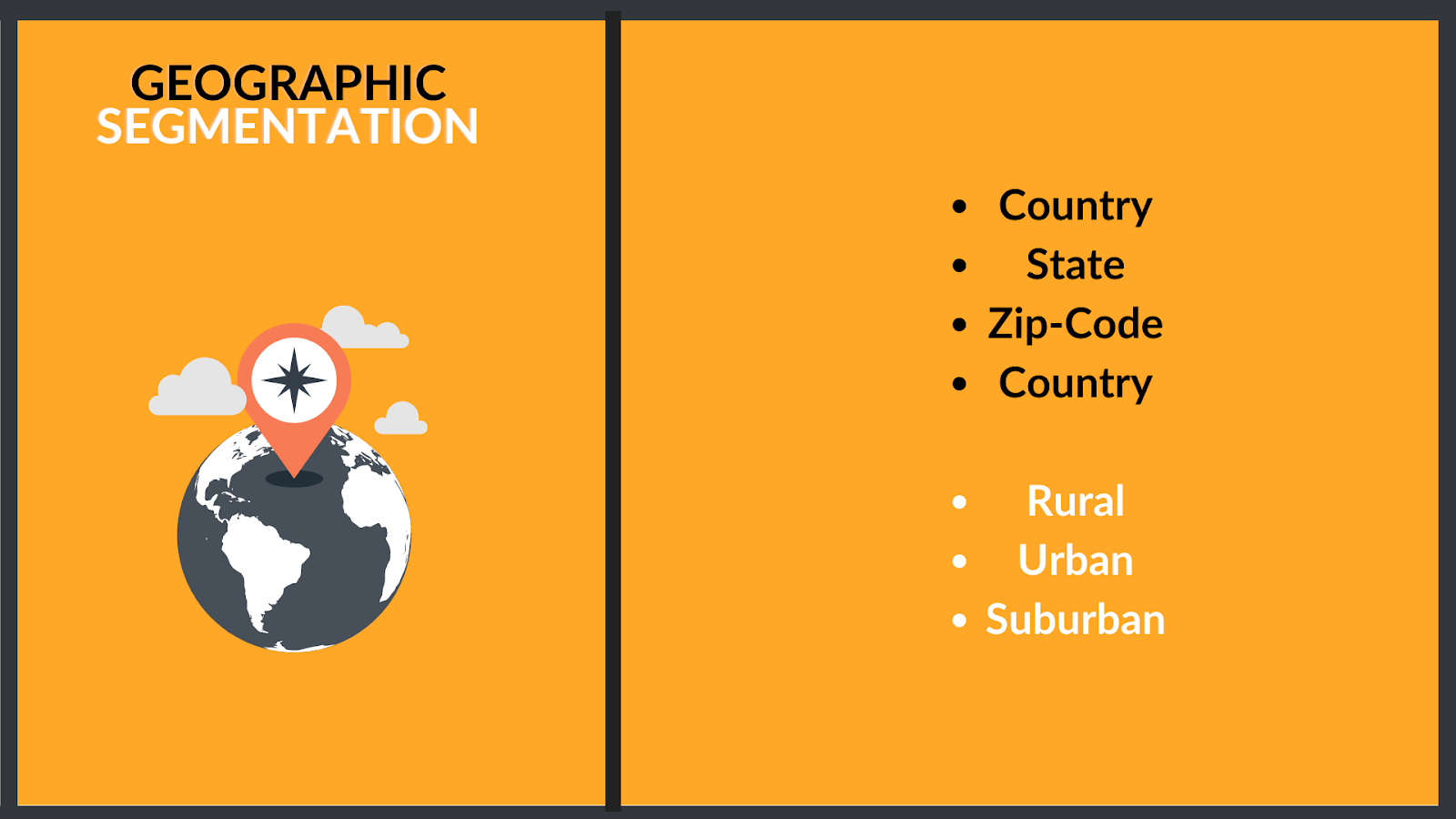When working on your marketing strategy to reach new customers, it’s important your message and campaign target the right audience. If the core message of your marketing is too broad, chances are you will still end up getting a few customers, but ultimately you will reach a lot of people who aren’t even in the market for the types of products or services you are selling. When your marketing and advertising isn’t tailored to the right audience you can lose money, customers and even brand reputation.
This is where the power of market segmentation comes in. It’s the missing piece to help you identify who your customers actually are. In this article we will see what market segmentation is, why it’s important for marketing and how some of the different types of market segmentation can impact your business.
What is Market Segmentation?
Market segmentation is the process of dividing up your market of potential customers into their own unique groups based on different consumer characteristics. The activity of dividing a broad group of consumers or business level markets into their own sub-groups allows marketers to identify segments that will be profitable for them and yield long term success.
It also allows marketers to create better advertising and marketing material that will appeal to those groups. Different groups require different marketing, promotion, price and products. As a result market segmentation allows businesses to create more meaningful engagements and marketing strategies to acquire new customers.
The process of market segmentation also gives marketers the ability to prioritise different products and services to different target audiences. This essentially helps marketers allocate their marketing resources and time more effectively.
This leads us into the different types of market segmentation. Each one has their own unique impact on your overall process.
Types of Market Segmentation

There are a plethora of different types of market segments you can create in marketing. We will explore the 4 major types of market segmentation that are used to serve as the baseline for segmenting your consumers and marketing strategies.
They are:
- Geographic Segmentation
- Demographic Segmentation
- Behavioral Segmentation
- Psychographic Segmentation
Geographic Segmentation

Geographic segmentation splits up the market based on the location of the consumer and is one of the most basic market segmentation strategies that are used to begin the process of market segmentation.
There are different types of geographic segmentation. They include:
- Country
- State
- Zip Code
- County
Another way to pinpoint your consumer base is based on the underlying characteristics of the area in which they live. This can include:
- Rural
- Urban
- Suburban
The more granular you get with your geographic segmentation the more focused you can make your marketing to that local market. Splitting up your market based on the location of your consumers is important because it allows you to make your advertising appeal more to their local taste and purchasing tendencies.
Once you have a clear idea of the underlying characteristics of the location you can niche down your marketing even more and custom tailor it to something that resonates with people locally. It’s a powerful way of truly getting in touch with your market.
Demographic Segmentation

Demographic segmentation is one of the most common segmentations strategies because it tends to be the easiest to observe. It divides the markets into groups by factor such as:
- Gender
- Age
- Occupation
- Income
- Race
- Nationality
- Marital Status
- Education
- Religion
For example, if you knew a certain income group would not be likely to purchase a certain product due to its high cost, you wouldn’t spend the time and resources to market to them.
Knowing which demographic category customers fall into can serve you greatly as a marketer because it can help you avoid marketing certain products to groups that would never have an interest in it. It saves you time, money and creative resources.
Behavioral Segmentation

Behavioral segmentation can be a bit tricky due to the simple fact that people can be unpredictable at times. It divides people into groups who share common behavioral patterns. As people grow older their purchasing and behavioral patterns tend to change. Tracking that change can be difficult but it can seriously improve your targeting accuracy.
Some of the common behavioral segmentation types include:
- Lifestyle Stage
- Purchasing Behavior
- Customer Loyalty
- Satisfaction of customer
- Customer Benefits
- Reason for Purchase
Finding the reason behind behavioral purchases can be accomplished by post sales surveys, follow up calls, and reviews. They can shed light on the reason for the purchase in order to help you understand the reason that customers buy.
Once you are able to narrow down the reason for their purchase you can create custom discounts, promotions and products to fit the needs of those customers.
Psychographic Segmentation

Psychographic segmentation divides consumers into different groups based on different underlying psychological characteristics.
The process of dividing people into these groups allows marketers to gain a better idea behind the intent of consumers’ purchases. Some of the different psychographic types include:
- Interests
- Opinions
- Hobbies
- Personal Attitudes
- Personality type
- Lifestyle
Once you are able to successfully identify these groups and market appropriately to them, you can build great brand awareness because your brand and products get into people’s heads. If your product or services resonate with them they will tell their friends, family and coworkers.
Recommended Reading: Psychographic Segmentation in Marketing: What is it and Why It’s Useful
The Importance of Market Segmentation
Businesses and companies who accurately segment their market into appropriate groups can reap some amazing benefits. Market segmentation is a critical piece in helping large scale companies increase their profitability.
Some of the benefits include:
- Creating more effective marketing strategies. Finding your target audience allows you to create better marketing that is suited to the interests and purchasing tendencies of those consumers.
- Improved brand loyalty. When customers feel that your products and services are a good fit for them at the right time in their life, they are more likely to stick with your brand and recommend it to others.
- Finding niche markets. Market segmentation can help you discover niche markets that you never knew existed. As a result it can help you open up new and untapped sales channels and customers.
- Creates brand differentiation. It allows your brand to be different from the competition because you aren’t simply competing. Instead you’re truly trying to understand your customers needs better and create specific messaging which fits their needs.
- Finding the right customers. Some companies market aggressively with the intent of casting a wide net in order to capture their client base. This can work for companies with massive budgets, but not for companies who have tight marketing budgets. Market segmentation allows you to market and sell to the right customers and the right time.
Conclusion
As you can see market segmentation is a serious value add for both your business and your future customers. It allows you to create more targeted marketing strategies with the intent to help out your customers at the end. As you go through the process of market segmentation you will learn more about your customers and more about the proper way that your business should market in order to improve it’s message, mission and awareness.
